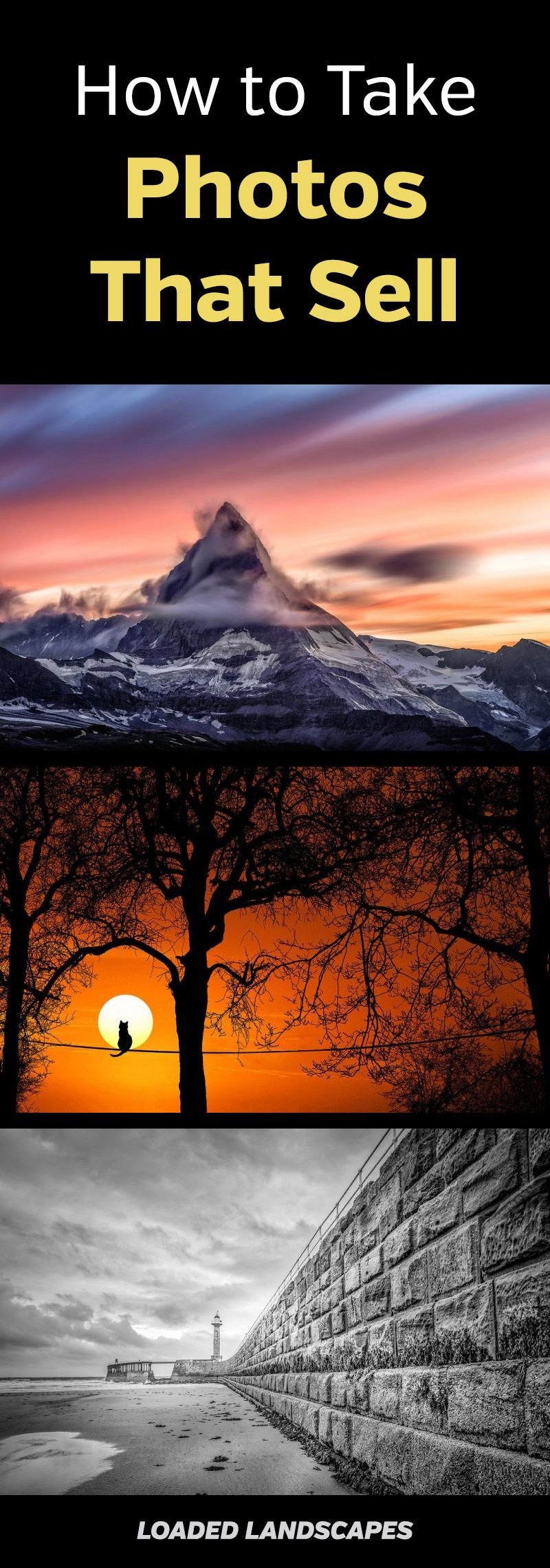If you’re looking to make some extra cash through photography, Getty Images is an excellent platform to showcase your work. But capturing photos that sell isn’t just about snapping a good shot; it's about understanding what buyers are looking for and adhering to specific guidelines. In this post, we’ll delve into the tips and tricks of capturing photos that will attract attention and potentially land you a sale on this prestigious stock photography site.
Understanding Getty Images' Requirements

Before diving into the world of stock photography, it's crucial to familiarize yourself with Getty Images' specific requirements. From technical standards to content recommendations, understanding these essentials will significantly enhance your chances of getting your photos accepted and sold. Here’s a closer look at what you need to keep in mind:
- Image Quality: High-resolution images are a must. Getty generally requires images to be at least 300 DPI (dots per inch). Aim for a resolution of 3000 pixels on the shortest side. This ensures that your photos look sharp and professional, no matter how large they’re printed.
- Composition: The rule of thirds, leading lines, and balance can elevate your shots. Well-composed photos can capture the viewer's eye and keep them engaged, which is essential in stock photography.
- Licensing Models: Understand the different types of licenses available, such as royalty-free and rights-managed. This helps you tailor your photos to potential buyer needs.
- Keywords and Metadata: Properly tagging your images with relevant keywords boosts their discoverability on the platform. Think about what potential buyers might search for.
- Subject Matter: Aim for versatile and commercially viable themes. Popular categories include lifestyle, travel, business, and technology. Check current trends to ensure that your content aligns with buyer demand.
- Model Releases: If your photos include recognizable people, securing a model release is essential to avoid legal issues. This gives you the right to use the images commercially.
By paying close attention to these requirements, you'll set yourself up for success on Getty Images. It’s all about presenting your photography in the best possible light, both literally and figuratively! So start capturing those stunning shots that resonate with buyers.
Also Read This: Why 123RF is Ideal for Both Professionals and Beginners
Choosing the Right Subject Matter

When it comes to selling photos on Getty Images, the subject matter is crucial. Not all subjects are created equal, and some will resonate with buyers more than others. Here are a few tips to help you pick the right subjects:
- Understand Market Demand: Research current trends and popular themes. Websites, blogs, and forums often discuss what types of images are in demand. For instance, certain themes like sustainability, ethnic diversity, or remote work may be trending, and photos reflecting these subjects can attract more buyers.
- Think About Your Target Audience: Who are you creating images for? Whether it’s businesses looking for stock photos or individuals seeking art for home decor, knowing your audience helps guide your subject choices. Consider what emotions or messages they want to convey.
- Diverse Perspectives: Emphasize diversity in your subjects. Images capturing various cultures, age groups, and lifestyles not only appeal broadly but also add depth to your portfolio. This can help clients see their own stories represented.
- Timeless vs. Trendy: While it’s great to tap into current trends, don’t overlook timeless subjects. Classic themes like family, nature, and community will always hold value, ensuring your work can sell over time.
- Unique Angles: Explore subject matter that isn’t widely photographed. Offering a fresh perspective appeals to buyers seeking standout images. Think about niche topics or alternative representations of common themes.
In summation, being strategic about the subjects you choose can significantly enhance your photo sales on Getty Images. Spend time brainstorming and researching so that you can curate a compelling and marketable collection.
Also Read This: How to Make Sandals at Home with a DIY Craft Tutorial
Mastering Composition Techniques

Once you've selected captivating subjects, the next step is to master composition techniques. Great composition is often what makes a photo stand out from the rest. Here are some foundational tips to elevate your photography:
- Rule of Thirds: Imagine dividing your frame into a 3x3 grid. Positioning your subject along these lines or at their intersections creates a balanced and engaging image. It helps guide the viewer’s eye through the photograph.
- Leading Lines: Use natural lines in your environment, such as roads, paths, or even shadows, to lead the viewer’s gaze into the frame. This technique directs attention where you want it, enhancing the storytelling aspect of your photo.
- Framing: Use elements in your surroundings to frame your subject. This could be anything from tree branches to doorways. Framing helps draw focus and adds depth to your image.
- Negative Space: Don’t shy away from leaving areas in your photo empty. This negative space can provide breathing room and context, allowing your subject to shine. It also caters to designs where text overlays may be needed.
- Experiment with Angles: Don't stick to the usual eye-level shot. Try shooting from low or high angles to create dynamic perspectives. Creativity in angles can make a mundane subject feel intriguing.
By applying these composition techniques, you can enhance the aesthetic appeal of your photos, making them more attractive to buyers on Getty Images. Don't hesitate to practice and experiment; the more you play with composition, the more natural it will become!
Also Read This: How to Cite a Photo from Getty Images
5. Optimizing Lighting for Stunning Shots
Lighting is one of the most critical elements in photography, and getting it right can make a huge difference in how your photos are received on platforms like Getty Images. Regardless of whether you’re shooting indoors or outdoors, understanding and manipulating light can elevate your images from ordinary to extraordinary.
Here are some tips for optimizing lighting:
- Utilize Natural Light: Whenever possible, use natural light. The golden hour, immediately after sunrise or before sunset, provides a soft, warm glow that is perfect for captivating images.
- Avoid Harsh Shadows: Shooting in the middle of the day often results in harsh shadows that can detract from your subject. Try to position your subject in a way that softens or eliminates these shadows.
- Use Diffusers: If you’re shooting outdoors on a sunny day, consider using a diffuser to soften the light hitting your subject. This can help create a more flattering look.
- Experiment with Angles: The direction of light can change your photos dramatically. Try different angles to see how the light interacts with your subject.
- Consider Backlighting: Backlighting can create a stunning effect, where your subject is illuminated from behind. This technique can produce a dreamy, ethereal quality.
By understanding and utilizing light effectively, you can create images that pop and resonate with viewers, which is especially important for selling on Getty Images.
Also Read This: Exploring Getty Images’ Extended License: Expanding Usage Opportunities for Buyers
6. Post-Processing and Editing Tips
Once you have your stunning shots, the next step is post-processing. Editing is not just about fixing mistakes; it’s about enhancing your images to make them stand out even more. Professional images often undergo some level of editing before they hit platforms like Getty Images.
Here are some essential editing tips:
- Choose the Right Software: Use editing software that suits your skill level. Adobe Lightroom and Photoshop are popular choices, but there are user-friendly options like Snapseed and Canva.
- Adjust Exposure and Contrast: Make sure your image has the right exposure. Brightening shadows and enhancing contrast can make your photo more dynamic.
- Color Correction: Adjust the white balance to ensure that colors are accurate. Warmer tones might evoke different feelings compared to cooler ones.
- Cropping and Framing: Don’t hesitate to crop your images for better composition. This can help direct the viewer’s focus to the most important aspects of your photo.
- Sharpening: Just a bit of sharpening can enhance the details in your image. However, be careful not to overdo it, as it can lead to noise.
Remember, the goal of post-processing is to bring your creative vision to life. Feel free to experiment, and don’t be afraid to develop your unique editing style that makes your photos memorable. With a well-executed edit, your images are more likely to catch the eye of buyers on Getty Images.
Also Read This: Compatibility of Storyblocks With 24p Video Format for Cinematic Projects
7. Keywording and Metadata Best Practices
When it comes to selling your photos on Getty Images, keywording and metadata are your best friends. If you think about it, these elements act like the signposts in a vast forest of images, guiding potential buyers to your work. So, how do you optimize them to maximize visibility and sales? Let’s break it down!
1. Be Specific: Use keywords that are as descriptive as possible. Instead of generic terms like "nature," go for "sunset over a tranquil lake" or "autumn leaves falling." Think about what a buyer would type into the search bar.
2. Use Synonyms: Different buyers may use different words to describe what they’re looking for. Include synonyms to cover all bases. For instance, “car” and “automobile” should both be included as keywords.
3. Utilize All Spaces: Getty allows you to use multiple keywords and metadata fields. Make sure to fill in every available slot to enhance discoverability.
4. Organize Your Keywords: Use a primary keyword that encapsulates the essence of the image, followed by secondary keywords that provide additional context.
5. Keep it Relevant: Only include keywords that are relevant. Misleading tags not only frustrate users, but they can also damage your credibility as a contributor.
For those who want an extra edge, consider conducting a keyword analysis to see what is trending on Getty. This can help you tailor your keywords to what buyers are actively searching for!
Also Read This: How to Remove Adobe Stock Watermark in Photoshop
8. Commercial Viability: What Sells?
Understanding commercial viability is key to making sales on Getty Images. If you want to know what types of photos are flying off the virtual shelves, you’re in the right place! Let’s explore some hot categories that tend to attract buyers:
| Category | Description | Example Ideas |
|---|---|---|
| Business & Technology | Images that depict modern work environments, innovative technology, or team collaboration. | Office settings, remote work scenarios, tech gadgets. |
| Lifestyle & Wellness | Visuals that portray healthy living, wellness activities, or leisure time. | Yoga sessions, healthy foods, outdoor activities. |
| Travel & Adventure | Pictures that evoke wanderlust, showcasing landscapes and unique experiences. | Stunning landscapes, cultural experiences, local cuisine. |
| Diversity & Inclusion | Images that reflect diverse cultures, gender equality, and inclusivity in various settings. | Diverse groups in community settings, family interactions. |
Now, here are a few more tips to help you pinpoint what sells:
- Stay Updated: Regularly check trending images on Getty to see what’s popular.
- Seasonal Themes: Think about holidays and seasons—unique imagery around these times can draw significant interest.
- Authenticity: Buyers are looking for authenticity. Candid, real-life moments can often outperform staged shots.
By focusing on these commercial categories and incorporating the trending topics into your shoots, you can dramatically improve your chances of making a sale!
Tips for Capturing Photos That Sell on Getty Images
In today's digital marketplace, stock photography has become an essential tool for businesses, marketers, and content creators. If you're looking to sell your photography on Getty Images, here are some effective tips to help you capture images that attract buyers.
1. Understand Your Audience
Before you start shooting, it's essential to know who your target audience is. Consider the following:
- What themes are popular?
- What type of imagery do businesses look for?
- What styles are trending on Getty Images?
2. Invest in Quality Equipment
While it's possible to take great photos with a smartphone, using high-quality gear can significantly improve your results. Consider investing in:
- DSLR or mirrorless camera
- Quality lenses
- Tripods, lighting, and accessories
3. Focus on Composition
Use the following composition techniques to enhance your images:
- Rule of thirds
- Leading lines
- Negative space
| Technique | Description |
|---|---|
| Rule of thirds | Dividing the frame into thirds helps achieve balance. |
| Leading lines | Use natural lines to guide the viewer's eye through the image. |
| Negative space | Incorporating space can create minimalistic yet powerful compositions. |
4. Pay Attention to Lighting
Good lighting can make or break a photo. Here are some tips:
- Utilize natural light when possible.
- Experiment with backlighting for added depth.
- Use reflectors to fill in shadows.
5. Edit Thoughtfully
Post-processing is crucial. Use software like Lightroom or Photoshop to enhance colors, adjust exposure, and sharpen images. Remember to keep the editing subtle and true to your subject.
By following these tips, you'll improve your chances of capturing stunning photographs that resonate with buyers on Getty Images. Take the time to practice, learn, and adapt as you grow your portfolio.
Conclusion: Capturing photos that sell on Getty Images requires a combination of understanding your audience, using quality equipment, mastering composition and lighting, and editing skillfully. Embrace creativity and stay updated with market trends to increase your success in the stock photography industry.
 admin
admin








